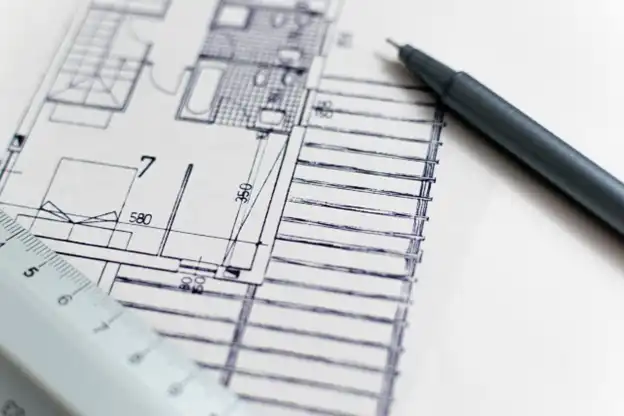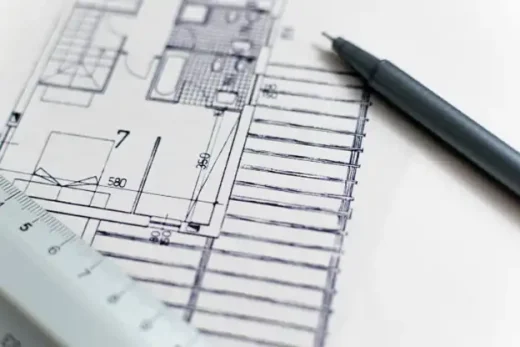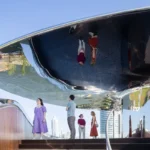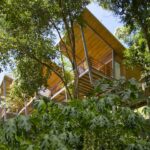Sustainable budgeting in architecture, how to balance cost and quality, Online property renewal design advice
Sustainable Budgeting in Architecture: How to Balance Cost and Quality
7 January 2025
In the ever-evolving world of architecture, sustainable design is more than a trend—it’s a necessity. From climate change mitigation to resource conservation, architects are increasingly tasked with creating buildings that are not only functional and aesthetically pleasing but also environmentally responsible. However, the challenge lies in balancing the cost and quality of sustainable architecture. Sustainable building practices often come with higher upfront costs due to the need for specialized materials, energy-efficient technologies, and more intricate designs. Yet, these investments can yield long-term savings, improved occupant health, and lower environmental impacts.
In this article, we’ll explore the principles of sustainable budgeting in architecture, how to effectively balance cost with quality, and practical strategies architects, designers, and clients can employ to achieve both financial and environmental sustainability.
The Rise of Sustainability in Architecture
Sustainability in architecture can be defined as the creation of buildings that minimize environmental impact while promoting the health and well-being of their occupants. The focus is on resource efficiency, reduced energy consumption, and overall environmental stewardship. Key principles include:
- Energy Efficiency: Buildings designed with a focus on energy performance can reduce long-term operational costs and environmental footprints.
- Use of Sustainable Materials: These materials are typically renewable, locally sourced, and have lower environmental impacts than traditional building materials.
- Water Conservation: Incorporating efficient water management systems such as rainwater harvesting and low-flow fixtures.
- Waste Reduction: Sustainable construction often involves waste reduction practices, including recycling, repurposing materials, and reducing construction debris.
Given the increasing demand for sustainable architecture, architects are tasked with developing designs that meet these goals while remaining cost-effective and high in quality. The balance between these three aspects—cost, quality, and sustainability—is not always straightforward, but it can be achieved through thoughtful planning, the right partnerships, and a commitment to long-term gains.
Understanding the Challenges of Sustainable Budgeting
The pursuit of sustainability in architecture comes with inherent challenges, especially when it comes to budgeting. Let’s break down the key difficulties faced by architects and developers:
- Higher Initial Costs: Sustainable materials and technologies—such as solar panels, energy-efficient HVAC systems, triple-glazed windows, and sustainable finishes—are often more expensive upfront compared to traditional alternatives. These higher costs can be difficult for clients to justify, especially if they are more focused on the short-term financial outlay rather than long-term savings.
- Complexity of Design: Incorporating sustainability features often requires more detailed and complex designs. For instance, passive design strategies such as optimal site orientation, natural ventilation, and daylighting require careful planning and a deeper understanding of the local climate. This complexity can lead to increased design time and higher consultancy fees, which can push the project cost higher. Are you looking for expert architectural solution that matches your style? Look no further than Van Voorhis.
- Uncertainty in Long-Term Savings: While sustainable buildings often result in significant long-term savings, these benefits are not always immediately obvious. Estimating the future return on investment (ROI) of energy savings, reduced maintenance, and environmental benefits can be challenging, which can make clients hesitant to approve the higher upfront costs.
- Perception of Sustainability: Many clients still perceive sustainable building practices as a luxury or unnecessary expense. Overcoming this perception and proving the tangible and intangible benefits of sustainable architecture requires clear communication and sometimes, a shift in mindset.
- Regulatory Hurdles and Permitting: Some regions still lack comprehensive regulations or incentives for sustainable building practices, which can make it harder to secure financing or approval for green projects. Conversely, areas with strict sustainability mandates may lead to added costs in compliance with regulations.
Strategies for Balancing Cost, Quality, and Sustainability
Despite these challenges, balancing cost and quality in sustainable architecture is possible. Below are several strategies that can help achieve this balance:
- Early Collaboration with Clients and Stakeholders
The first step in sustainable budgeting is to have an open conversation with clients and stakeholders about the project’s goals. By defining the priorities early in the process—whether that’s energy efficiency, water conservation, or the use of renewable materials—you can make informed decisions about where to allocate resources. A clear understanding of the client’s expectations helps architects develop a design that aligns with both budget constraints and sustainability objectives.
This stage also involves considering the long-term operational savings that come with sustainable buildings. A thorough cost-benefit analysis, demonstrating the financial return on investment (ROI) from energy savings, water savings, and reduced maintenance, can help clients understand the value of sustainable investments.
- Design with Efficiency in Mind
To manage both cost and quality, design efficiency should be prioritized. This can mean leveraging passive design strategies, which do not require significant capital investment but can have profound effects on the building’s performance. Examples include:
- Maximizing Natural Light: Proper building orientation and window placement can reduce the need for artificial lighting, lowering energy costs.
- Thermal Mass and Insulation: Using materials with high thermal mass can regulate indoor temperatures and reduce the need for heating and cooling systems.
- Natural Ventilation: Designing for natural airflow reduces reliance on mechanical ventilation systems, which consume significant energy.
Designing with these principles in mind can reduce the long-term operating costs of a building and offset any higher upfront costs of other green technologies.
- Prioritize the Selection of Low-Cost, High-Impact Sustainability Features
Not all sustainability features are created equal in terms of cost and impact. Some sustainable design elements deliver high benefits at relatively low costs. For example:
- LED Lighting: LED lights are more energy-efficient and have a longer lifespan than traditional incandescent bulbs, making them a low-cost way to reduce energy consumption.
- High-Performance Insulation: Insulation made from recycled or natural materials like cellulose, cork, or wool can improve thermal efficiency at a lower cost than more conventional materials.
- Water-Efficient Fixtures: Low-flow faucets, showerheads, and toilets are cost-effective and contribute significantly to water conservation.
- Locally Sourced Materials: By sourcing materials locally, transportation costs are reduced, which also helps lower the project’s carbon footprint.
Focusing on these relatively low-cost options allows architects to create an energy-efficient, sustainable design while staying within budget.
- Take Advantage of Green Building Certifications and Incentives
Many governments and organizations offer financial incentives for sustainable building practices. Green building certifications such as LEED (Leadership in Energy and Environmental Design), BREEAM, and WELL provide a framework for building projects that focus on sustainability and energy efficiency. These certifications often come with various benefits, such as tax breaks, grants, or low-interest financing.
Additionally, many countries and regions provide incentives for specific sustainable technologies, such as solar panels or geothermal heating systems. By taking advantage of these incentives, architects can offset some of the initial costs associated with green building features.
- Value Engineering with Sustainability in Mind
Value engineering (VE) is a method used to improve the value of a project by examining its functions and considering alternatives that reduce costs without compromising quality. During the VE process, sustainability can be integrated by evaluating the cost-effectiveness of different building materials, systems, and design strategies.
For example, an architect might evaluate the cost-benefit trade-off between installing expensive solar panels or investing in a higher-performance HVAC system. While both options are sustainable, the architect can determine which solution will have the highest long-term payoff and meet both sustainability and budget goals.
- Lifecycle Cost Analysis (LCA)
One of the most effective ways to ensure that sustainable design decisions are financially viable is through lifecycle cost analysis (LCA). LCA takes into account not just the upfront costs but also the long-term costs of ownership, maintenance, and operation.
By applying LCA, architects and clients can make better decisions about materials, systems, and design choices based on their total cost over time. For example, while an energy-efficient building system may have a higher initial cost, it may pay for itself in energy savings over a 20-year period. Thus, LCA can help shift the focus from upfront costs to long-term value.
Conclusion
Sustainable architecture presents unique challenges in terms of budgeting. However, through careful planning, thoughtful design, and effective use of available resources, it is possible to achieve a balance between cost, quality, and sustainability. Early collaboration with stakeholders, focusing on high-impact, low-cost sustainable strategies, and leveraging incentives and lifecycle analysis are all essential tools in ensuring that green building practices are financially viable without compromising the quality of the finished product.
In the end, sustainable design is not just an expense—it’s an investment. The long-term benefits of reduced energy consumption, lower operating costs, and a positive environmental impact make sustainable architecture a worthwhile pursuit, both for the architect and the client. As more buildings are designed with sustainability in mind, the cost of sustainable materials and technologies will continue to decrease, making green architecture more accessible and affordable for all.
Comments on this guide to Sustainable Budgeting in Architecture: How to Balance Cost and Quality article are welcome.
Home Design
Home Design and Real Estate Posts
Designing tips for home interior guide
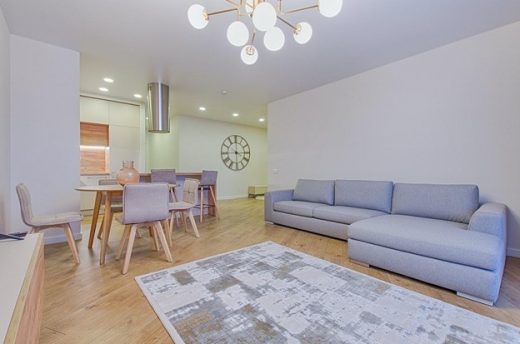
Interior Home Design Trends 2022
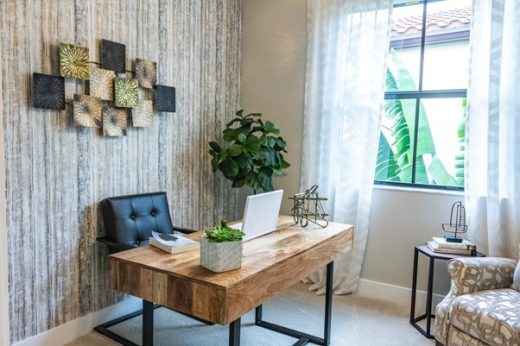
10 Mistakes To Avoid When Investing In Real Estate
Property
Residential Architecture
Comments / photos for the Sustainable Budgeting in Architecture: How to Balance Cost and Quality page welcome

